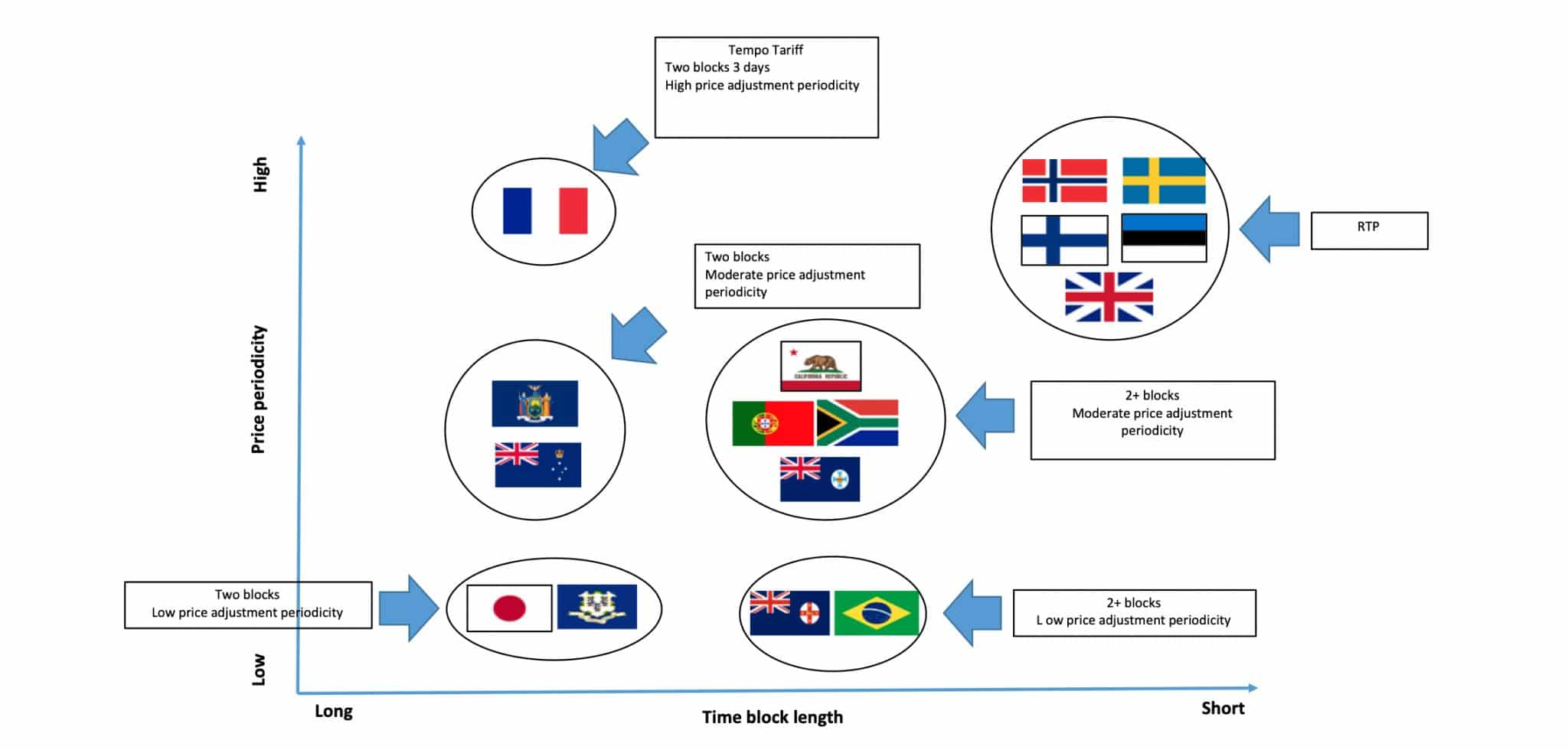Implementing Dynamic Tariffs for Electricity Retail: Choices and Barriers
This is the first instalment of our November Topic of the Month with FSR Global: Unravelling the nuances of Dynamic Tariffs for electricity retail
November Topic of the Month: Unravelling the nuances of Dynamic Tariffs for electricity retail
Instalment 1: Implementing Dynamic Tariffs for Electricity Retail: Choices and Barriers
Instalment 2: The Spanish experience with dynamic tariffs
Instalment 3: The Swedish Experience with Dynamic Retail Tariffs
Instalment 4: Time of Use and Dynamic Pricing Rates in the US
Implementing Dynamic Tariffs for Electricity Retail: Choices and Barriers
Faruqui and Palmer (2011) define dynamic tariffs as “charging of different electricity rates at different times of the day and year to reflect the time-varying cost of supplying electricity.” There are various types of dynamic tariffs such as time-of-use (ToU), real-time pricing (RTP), critical peak pricing (CPP), and peak time rebates (PTR).
Over the years, dynamic retail electricity tariffs have been applied in varying forms around the globe, mostly for commercial and industrial consumers but increasingly also for residential consumers. Designing dynamic tariffs at the residential level can be more complicated than for large consumers due not only to significant infrastructure requirements but also to political economy issues surrounding the supply of electricity to individual citizens and households. Nevertheless, dynamic tariffs are becoming more prevalent to integrate more variable renewable energy sources efficiently and to manage the grid constraints.
This article discusses key design choices and barriers for household-level dynamic tariff implementation based examination of 16 case studies and literature.
Choices while implementing dynamic tariffs
The two primary design choices are the time block length and the price periodicity.
Time Block Length
Time block length refers to the number of distinct tariff periods into which a day is divided, i.e. the granularity of the time blocks. For instance, in a real-time pricing approach, there could be 24 one-hour time blocks (considering one-hour time granularity in the wholesale market) and can be considered to have a short time block length. Conversely. A tariff with no variation has the longest time block length.
Price Periodicity
Price periodicity refers to the time interval between revisions of the tariff. In a real-time pricing approach, the price is updated in advance for each hour of the next day. Hence, the tariff periodicity is high. Conversely, if the tariff is revised annually, bi-annually or for the length of the regulatory period, the price periodicity can be considered medium to low. Figure 1 illustrates this variation in the (most advanced) retail tariffs available in the different countries/states studied.

Apart from the two primary design choices, two implementation choices need to be made that have a direct impact on the primary design choices.
Choices made by regulators on the dynamic tariff design
The level and method of regulatory intervention have a strong bearing on the dynamic tariff design. These choices remain solely at the discretion of the regulator and depend on its mandate. For instance, regulators may intervene to protect vulnerable customers against price risks or to ensure that consumers are protected from disconnection if a retailer becomes bankrupt or a consumer does not have a contract with any retailer. Some commonly observed regulatory interventions are default tariffs, the nomination of the last resort supplier, retail price caps and subsidies for the energy poor.
Choices made by consumers
The choices offered to consumers can be best discussed from two perspectives: a) can consumers choose whether to opt for a dynamic tariff or not? And b) how many options do consumers have when choosing dynamic tariffs?
In the context of the first perspective, on the one hand, dynamic tariffs can be made mandatory for all consumers or an opt-out provision may be provided. On the other hand, consumers may choose among (different) dynamic tariff offerings along with the traditional flat rate (opt-in). The design choice thus made can have spillover consequences in terms of consumer acceptance of the tariff structure.
The second perspective relates to the variety of offerings that consumers can choose from. In countries/states with retail competition, different service providers offer their variations of dynamic tariffs. Therefore, depending on their constraints and risk appetites, consumers may choose the most suitable dynamic tariff for their needs.
Barriers to dynamic tariff implementation
Physical and ICT infrastructure requirements
The first barrier in the implementation of dynamic tariffs can be an absence of enabling physical and ICT infrastructure. The most basic minimum infrastructure required is smart meters. At the network end, smart grid solutions for monitoring network dynamics are required if grid constraints are to be considered in the dynamic tariff design. Also, ICT solutions to inform consumers about real-time pricing are needed.
The power market maturity level
The second barrier in the implementation of dynamic tariffs can be a lack of the necessary level of market maturity. For example, the real-time pricing approach is dependent on the energy price dynamics in the wholesale electricity market. The energy price in the wholesale market reflects the cost to the retailer of purchasing energy. This price signal is passed on to consumers. Therefore, the presence of a wholesale market arrangement is required to be able to apply real-time pricing.
Consumer behaviour
The third barrier to consider is consumer behaviour. For a dynamic tariff to achieve its aims, consumers need to react to the economic signal that is being provided. For instance, if a dynamic tariff is introduced to reduce congestion at a particular time, consumers must react to the price signal and shift load during that time. Therefore, consumers have to have a sufficient level of knowledge and understand the benefits arising from using dynamic tariffs.
More on Dynamic Tariffs
Watch the recording of the FSR Global online event: A Global View on Dynamic Tariffs or read FSR Global’s policy brief: “Dynamic retail electricity tariffs: choices and barriers”.







